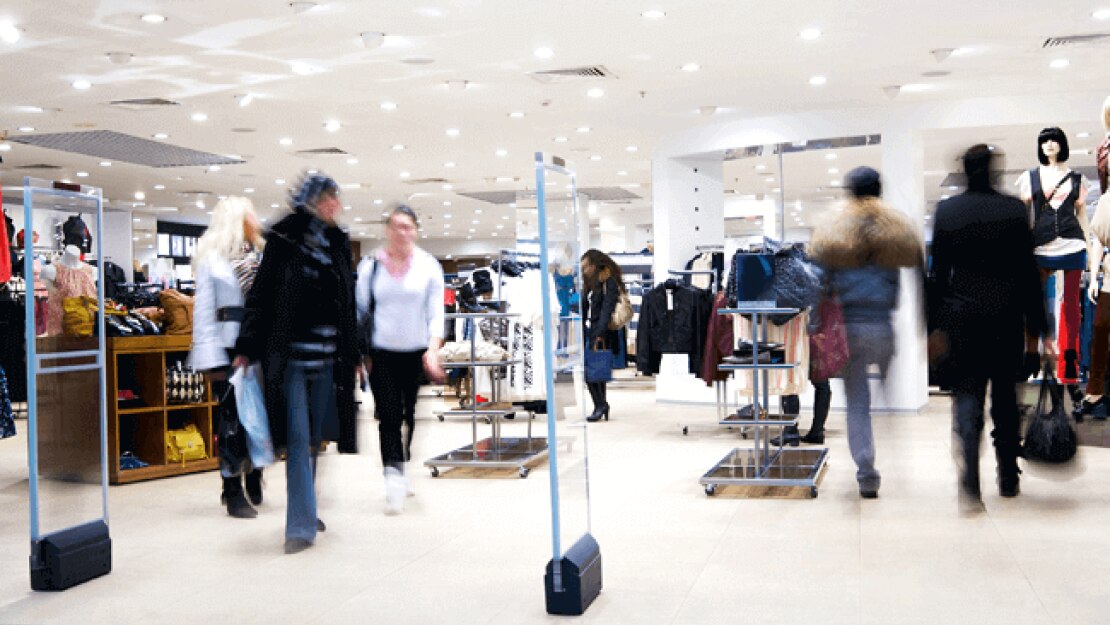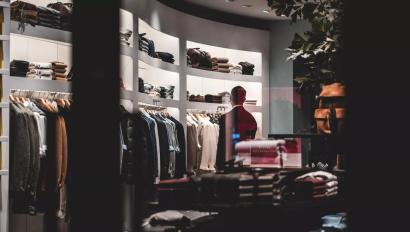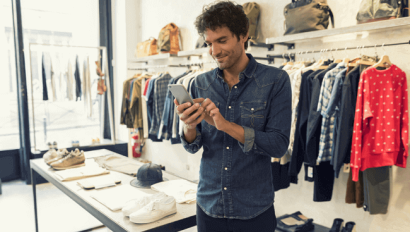3 Reasons You Need to Think Beyond Anti-Theft Devices for Retail Security

When you think of anti theft devices for retail stores, likely the first thing that comes to mind is Electronic Article Surveillance (EAS). But data show that stores continue to suffer significant losses from shrinkage even with anti-theft store security. According to the National Retail Federation (NRF)’s National Retail Security Survey 2023, retail shrink rates were up from 1.4% in 2021 to 1.6% in 2022.
It’s not that EAS systems aren’t effective — it’s just that they only address part of the problem. And there is good evidence that the challenge of retail security became more difficult during the pandemic.
While anti theft devices for retail stores like EAS and RFID tags are a crucial component of your retail security system, they need to be part of a broader, more encompassing security program to truly maximize effectiveness and reduce retail shrinkage.
Combat Employee Theft with Proactive Retail Security Solutions
The NRF’s Retail Security Survey reported that the average company dollar loss per internal theft investigation was $2,180 in 2022. That’s because employee theft can go on for a long time before it’s discovered.
Some of the common methods that employees use to steal from their employers reveal why you can’t rely on EAS systems alone:
-
Removing security tags from inventory
-
Keeping cash from a false refund
-
Ringing up an item for less than its listed price, collecting the full amount, and pocketing the difference.
In addition to employee training, integrating advanced anti theft devices for retail stores, like RFID tags and smart surveillance systems, ensures that theft and fraud won’t go unnoticed.
24/7 Retail Security: Defending Against Organized Retail Crime
One of the disturbing pandemic trends flagged by the NRF is the growth in Organized Retail Crime (ORC). While it can take many forms, one of the key characteristics is that it is not limited by time or place. Retail security is now a 24/7 concern.
It’s important to review how you’re protected after hours, especially for stores that are at high risk because of high-value inventory. With e-commerce now a part of almost every store’s strategy, cybersecurity is just as important. On-line security and bricks-and-mortar security have essentially merged together, and every business needs to be ready.
As e-commerce continues to grow, protecting your retail security system at the entrance of retail stores has become just as important as securing your online platforms. In fact, online and in-store security have merged, and every business needs to adapt.
Safeguarding Retail Assets Beyond Inventory
Your inventory is certainly a major part of your business. But it’s not the only thing of value you need to protect. There are a range of other valuables that your EAS system won’t safeguard, from cash to IT assets.
Even more important: how are you protecting your people? If it’s a worry for your organization, you’re not alone. In the survey that underpins the NRF’s report, fully 82% of respondents said store violence/shooting incidents was a greater concern than five years ago – the biggest increase of any risk factor. This underscores the importance of addressing not just anti-theft systems, but a full spectrum of retail security devices.
Comprehensive Retail Security: Beyond Anti-Theft Devices
So, what can you do in response to the ever more complex retail loss prevention landscape?
As e-commerce giant Shopify notes, a good first step is with your people. Training for both managers and staff on how to spot and reduce theft, fraud, and errors will help them be your first line of defense. One of the most simple and effective ways to deter shop lifting is to greet every visitor in person. It’s a true win-win. It makes real customers feel welcome while strongly discouraging anyone contemplating theft.
The culture you build also matters for preventing internal loss: you can nurture and model integrity and pride in the workplace. When you are clear about your security policies, and both employees and vendors know that retail anti-theft door security systems are in place, it reinforces a culture of prevention.
There are also a range of retail security solutions to consider to help you address the core dilemma of anti-theft security: maintaining an open environment with customers able to see and handle items while minimizing loss. You can lock items up, but that may reduce sales. You can also increase the number of staff on the floor to deter theft, but that might affect profitability. The right technology can help you solve this puzzle.
Leveraging Video Surveillance for Comprehensive Retail Security
If you haven’t already integrated video surveillance into your retail security system, now is the time. Video surveillance is the backbone of a comprehensive retail security system, allowing for real-time loss prevention.
Smart Installation: Deploying IP Cameras and Cloud-Based Security Solutions
It is easier than ever to add cameras almost anywhere with minimum disruption, even in existing buildings. The latest retail security devices include IP cameras that can be installed with minimal disruption, even in existing stores. These cameras connect to your network and provide cloud-based storage, meaning you can monitor your store from anywhere at any time. IP cameras run on your local area network just like any other type of network device, and don’t need any additional cabling. You can even free yourself from managing local video storage through a cloud-based solution that gives you access to your cameras at any time no matter where you are.
It’s no longer necessary to have someone monitoring video footage live to identify crime. By adding in a layer of analysis or data from other systems like inventory control, your video surveillance system can help you manage shoplifting, internal theft, and shrinkage in real-time. Let’s look at each one.
Anti-Theft Systems: Harnessing Predictive Technology to Prevent Shoplifting
Advanced anti-theft systems now include predictive technology that helps stores identify behaviors that could indicate intent to steal. A typical application is in areas with high-value inventory. By looking at factors like dwell time, gestures and movements, and eye motion, the software flags individuals for review and alerts store staff to investigate.
Detecting Employee Theft with Data-Driven Insights
Like much crime, employee theft isn’t really random. It’s more likely to happen where the conditions make it possible – in other words when people believe they can get away with it. Predictive technology can help organizations identify which stores are at most risk. By integrating your retail security system with data analytics, you can detect patterns that might indicate an internal theft problem. This approach uses performance indicators like revenue, staff turnover, and more to highlight retail stores at high risk.
Pinpointing Shrinkage Sources with Video Surveillance and Inventory Analytics
Retail shrinkage can be due to several factors. It might be direct employee theft, or it could be outside service providers like delivery companies. But there is one source of truth, and that’s the inventory management system. If there’s a discrepancy between expected and actual inventory, retail organizations can check their video systems for clues about where to begin investigations. By integrating your anti theft devices for retail with your inventory management systems, you can identify discrepancies and use video surveillance to investigate.
Building a Culture of Accountability with Advanced Technology
Retail security is a complex problem, but the right technology paired with a strong culture can do a lot to protect your organization. When employees and outside vendors know that loss prevention technology is in place, they become part of the solution. They know that theft will not be tolerated as something that “just happens” and will be more willing to speak up if they see something.
To protect your store from theft and shrinkage, explore the best anti-theft systems for retail stores today. Contact our experts to learn more about advanced retail security devices, anti-theft systems, and retail security solutions tailored to your needs.
Disclaimer: By using the Blog section of this website (“Blog”), you agree to the terms of this Disclaimer, including but not limited to the terms of use and our privacy policy. The information provided on this Blog is for information purposes only. Such information is not intended to provide advice on your specific security needs nor to provide legal advice. If you would like to speak to a Security representative about your specific security needs, please contact us.























